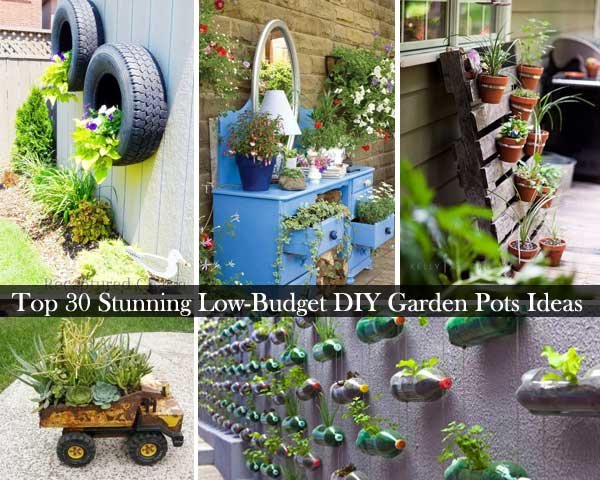Creating a beautiful garden doesn’t have to break the bank. With some creativity, planning, and a bit of elbow grease, you can design a vibrant, peaceful green space without spending a fortune. In this guide, we’ll explore practical strategies to help you build a stunning garden that fits your budget and lifestyle.
Why Go Budget-Friendly?
Many new gardeners assume that gardening is expensive. While it can be if you’re buying rare plants or high-end landscaping materials, most home gardens can be done beautifully for less. Here’s why:
- You can reuse materials you already have
- Many plants can be grown from seeds or cuttings
- Upcycling and DIY projects reduce costs
- Nature does most of the work once you set up the basics
Step 1: Plan Before You Plant
A good plan saves money and mistakes. Before buying anything, ask yourself:
- How much space do I have?
- What is my sunlight exposure?
- Do I want decorative plants, edible plants, or both?
Sketch out your space, even if it’s just a small balcony or backyard. This will help you place each plant where it will thrive and look good.
Step 2: Start with Seeds and Cuttings
Buying mature plants from garden centers can be expensive. Instead:
- Grow from seeds: Seeds are far cheaper and available in variety packs.
- Use cuttings: Ask friends or neighbors for cuttings of easy-to-root plants like pothos, mint, or succulents.
- Divide existing plants: Many plants like hostas or herbs can be divided and spread across the garden.
This approach is slow but cost-effective and deeply satisfying.
Step 3: Choose Low-Maintenance Plants
Opt for plants that are easy to grow, need less water, and don’t require constant care. This saves you time and reduces costs in the long run.
Top budget-friendly choices include:
- Marigolds: Hardy and colorful
- Zinnias: Great for sunny spots
- Mint, basil, rosemary: Easy to grow and edible
- Lavender: Beautiful, fragrant, and pest-resistant
- Aloe vera: Low water needs and soothing gel
Step 4: Use Recycled Materials
Instead of buying new pots, borders, or decorations, use what you already have:
- Old buckets, cans, and baskets can be turned into planters
- Wooden pallets make great vertical gardens
- Broken tiles or stones can be used as decorative borders
- Glass jars work well for small indoor herb gardens
Let your creativity lead the way. You’ll be surprised what you can repurpose.
Step 5: Make Your Own Compost
Instead of buying expensive fertilizers, make compost at home. All you need is a small bin or bucket and organic waste like:
- Vegetable peels
- Coffee grounds
- Eggshells
- Lawn clippings
- Dry leaves
Within weeks, you’ll have nutrient-rich compost to feed your plants—completely free.
Step 6: DIY Garden Décor
A few homemade touches can make your garden look like it was professionally designed.
Some ideas:
- Painted rocks as labels or decorations
- Wind chimes from old utensils or keys
- Homemade stepping stones using concrete and molds
- String lights to add charm during the evening
Pinterest and YouTube are great sources of DIY inspiration for garden lovers.
Step 7: Collect Rainwater
Save on your water bill by harvesting rainwater. A simple barrel placed under a gutter can collect enough water for days of garden care. Make sure to:
- Cover the barrel to avoid mosquitoes
- Use a spout or watering can to distribute the water
- Clean it occasionally for hygiene
Rainwater is better for plants because it’s free of chlorine and chemicals.
Step 8: Buy in Bulk or Swap with Others
Join local gardening groups or community exchanges. Many gardeners:
- Share seeds
- Swap plants
- Sell surplus items at low prices
Buying soil or mulch in bulk from garden centers or nurseries is also much cheaper than getting small bags.
Step 9: Keep It Simple and Natural
The most beautiful gardens aren’t always the most expensive. Use natural elements like:
- Gravel or wood chips for pathways
- Native plants that adapt well to your climate
- Simple symmetry or grouped plantings for design
Minimalism can be stunning — and easier to maintain.
Step 10: Be Patient and Grow with Your Garden
Building a budget-friendly garden takes time. You might not get the lush, magazine-ready look in a single season — but that’s okay. Gardening is a journey.
Celebrate the progress:
- First blooms
- Plants thriving from seeds
- Wildlife visiting your green space
Each season your garden will improve, becoming more established and beautiful — with very little cost.
Your Garden, Your Style
You don’t need a landscape architect or an expensive nursery trip to have the garden of your dreams. By using simple strategies, choosing the right plants, and embracing DIY solutions, you can create a space that’s both affordable and gorgeous.
Your low-budget garden isn’t just about saving money — it’s about creating something meaningful with your own hands.

